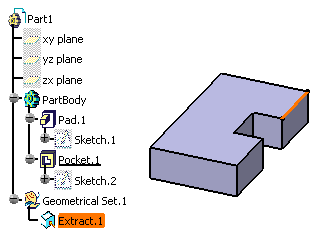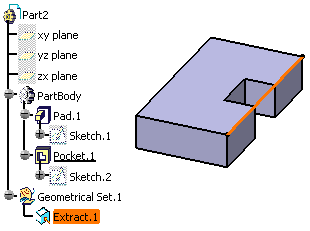Both examples below compare two results you can obtain depending on whether you work in a hybrid design environment or not. Just keep in mind that when creating a feature inside a body, whatever its location in the specification tree, that feature absorbs the geometry of the feature preceding it in the tree as illustrated in the following scenarios.
Creating a Pocket at a Given Location Inside the Body
This first scenario provides a basic example of the absorption rule prevailing in a hybrid design environment.
-
Create a new part ensuring that Enable hybrid design and Create a geometrical set options are on. For detailed information on these options, refer to the Customizing section of this guide.
-
Create a pad, a hole then a fillet on the pad in PartBody set as the current body.
-
In the Generative Shape Design workbench create an intersection between the pad and plane xy.
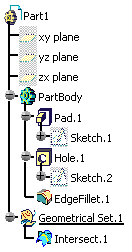
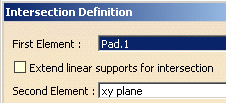
-
Create a pocket.
-
If now you decide to edit your Intersect feature, you will see that the pocket which was created just after the pad is to be taken into consideration.
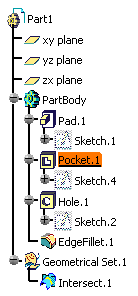
Hybrid Design Environment
When editing Intersect.1, you can see that the initial specifications have been replaced: Pad.1 initially used to compute the intersection is no longer taken into consideration. Because we work in a hybrid design environment, Pad.1 has been absorbed by Pocket.1. As a consequence, Pocket.1 is a specification of Intersect.1.
Non-hybrid Design Environment
When editing Intersect.1, the initial specifications remain the same: Pad.1 initially used to compute the intersection is no still taken into consideration.
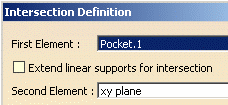

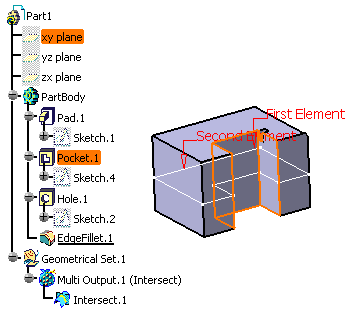
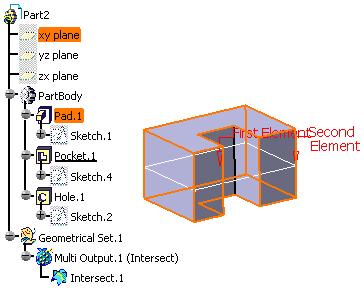
Creating a Pocket As the Last Feature of a Body
This scenario shows you how the automatic replace mechanism affects the creation of a feature.
-
Create a new part ensuring that Enable hybrid design and Create a geometrical set options are on.
-
Create a pad in PartBody set as the current body.
-
Set Geometrical Set1 as current.
-
In the Generative Shape Design workbench extract an edge of the pad.
-
Back in the Part Design workbench, create a pocket using the side face as shown below:
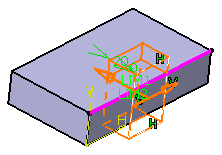
Once the pocket is created, you can note that the extracted edge is trimmed and shortened by the pocket. Conversely, in a non-hybrid design environment, the extracted edge would not be affected by the pocket creation.
Hybrid Design Environment
The extracted line is no longer continuous.
Non-hybrid Design Environment
The extracted line remains continuous.
